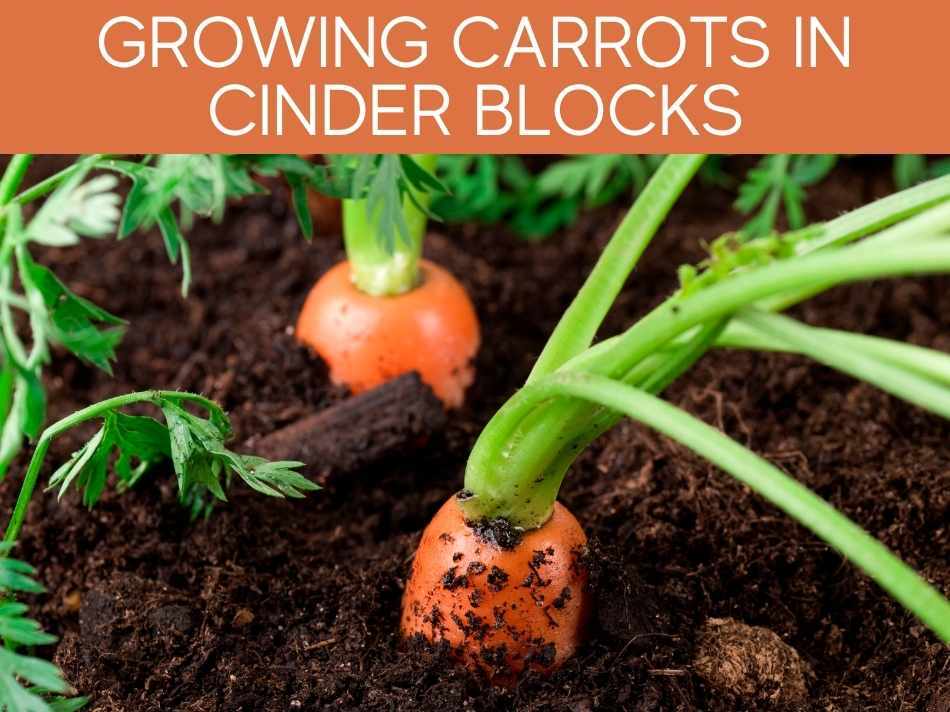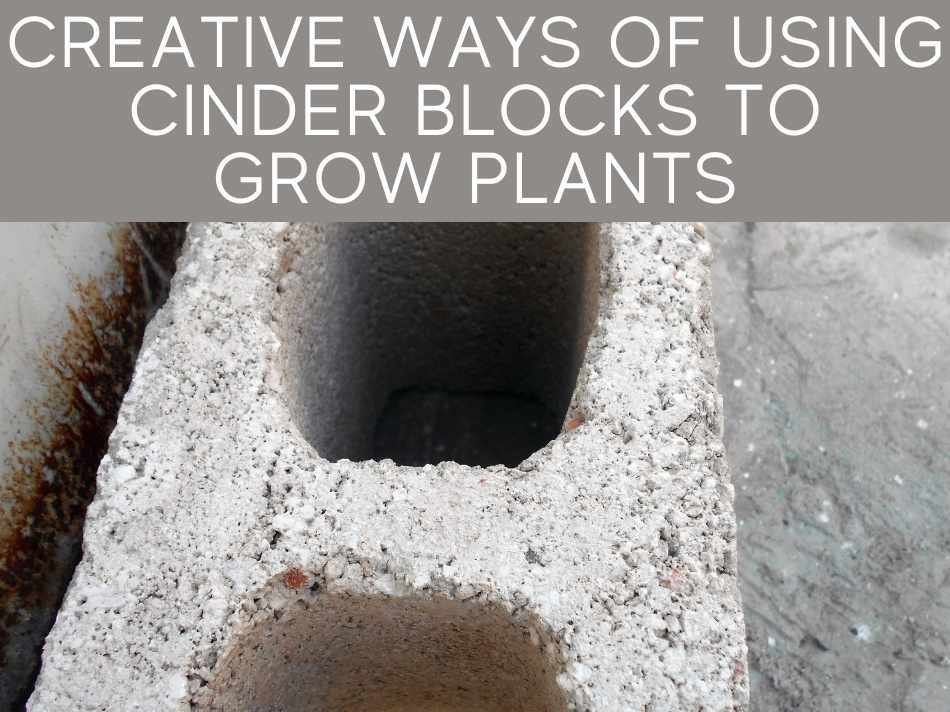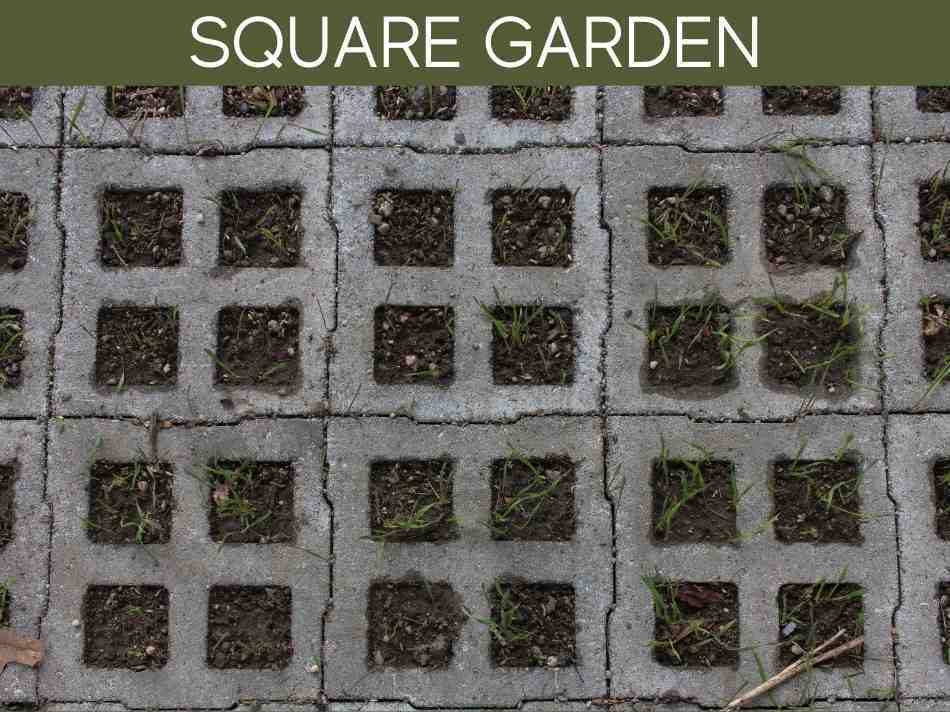Cinder blocks are one of the most common things you see, but for the most part, they’re never used for anything other than construction work. Lately, however, people have been finding some creative usage for these otherwise dull-looking items. Some even try growing plants in cinder blocks–especially in raised beds.
Plants can be grown in cinder blocks. Plants that grow best in cinder blocks are typically those with smaller root systems: radishes, carrots, determinate tomato varieties, and lettuce & other greens. However, in hot climates, the thermal mass of cinder blocks can soil too hot for some plants.
In this article, we will explore this topic further, looking at all the benefits and drawbacks of using cinder blocks to grow plants. We will also be sharing some cool creative setups you can build using multiple blocks.
Things to Consider When Growing Plants in Cinder Blocks

Some advantages

-
Growing plants in cinder blocks naturally curb the growth of pestering weeds. This can be a huge advantage as weeds require a lot of tending to.
-
If you’re growing tropical fruits like tomatoes–which originated in a tropical/sub-tropical region–cinder blocks can help aid their growth by providing warmth. This is because of the block’s ability to retain the heat it gets from the sun.
-
It’s incredibly easy to water plants that have been grown in cinder blocks. You can simply add water to the holes in the blocks as you would in a flower pot.
-
Cinder blocks are incredibly cheap. And for some people, there’s even a good chance you’ve got some lying around in or near your property. You can use these low-cost materials to grow plants indoors or outdoors.
-
For plants that require support, cinder blocks are the perfect companions. They can help keep the flowers, fruits, and leaves of the plant off the ground.
Potential Drawbacks

-
Cinder blocks are only okay for plants that have small root balls or slow-spreading roots, like peppermint, jade plant, parsley, scallion, etc. Plants with deeper roots like alfalfa won’t thrive in cinder blocks.
-
It can also be difficult to add fertilizers into cinder block holes once the plants have been planted.
-
For some plants, the support provided by cinder blocks are just not enough for healthy growth.
-
If you live in a hot climate or if you’re growing plants that naturally thrive in cool settings, using a cinder block may prove detrimental due to their natural ability to absorb and retain heat–which can make soil excessively hot for plants.
-
Cinder blocks are made of concrete, which has a very low pH. This could affect the pH of the soil being used in the block and could adversely affect the growth of the plant.
Growing carrots in cinder blocks

Cinder blocks are absolutely perfect for growing carrots. You could grow any variety in them, and the end result will be a nice unforked carrot.
You could even try growing longer varieties of carrots like Danver’s Half-Long by stacking a couple of cinder blocks on top of each other.
Alternatively, you can make sure that the plant has access to deeper soil beneath the cinder block.
One thing worth noting is that carrots typically require a 2-3 gallon pot for growing. So make sure you have the right-sized cinder block.
Can you grow tomatoes in cinder blocks?

Certain varieties of tomatoes, like the determinate varieties, can be grown in cinder blocks.
Not only do they get the adequate support they need, but the ability of the blocks to retain heat is also advantageous for these tropical plants.
On the other hand, indeterminate varieties of tomatoes cannot thrive in cinder blocks as they require a stronger support system and occasional pruning.
If you want to grow tomatoes in cinder blocks, make sure the tomatoes get enough sunlight, water and that their fruits and leaves are kept off the ground.
Tomatoes–like other garden fruits & vegetables–typically require a 5-gallon pot or container to grow. The roots require, in particular, need at least 4×4 inches–or more–space to thrive.
So make sure you use an appropriately sized cinder block. Also, make sure the bottom of the cinder block is well connected to the soil beneath it.
What plants grow well in cinder blocks?

Generally, plants that grow well in cinder blocks are varieties that have small root systems or don’t need much soil.
Cinder blocks are often used for building raised beds. So it’s natural that you might want to try growing plants in the holes for the cinder blocks themselves.
If you’re thinking of building a raised bed out of cinder blocks, you might want to check out our full article for the pros & cons of using cinder blocks for raised beds.
Better plant varieties for growing in cinder blocks include:
-
Onions
-
Scallions
-
Beets
-
Radishes
-
Carrots
-
Lettuce, chard, spinach, & other greens
-
Micro-greens
-
Tomatoes–especially determinate varieties, which tend to be smaller than indeterminate varieties
Creative Ways of Using Cinder Blocks to Grow Plants

So far, we have established that you can indeed grow plants in cinder blocks. You may choose to grow single plants in a single block, but that isn’t necessarily a requirement.
There are plenty of neat tricks and clever ways to make the most out of cinder blocks for growing plants.
In this section, we will look at some creative ways in which you can employ cinder blocks in order to grow plants in them.
Staircase Garden

You can make a nice little staircase out of some cinder blocks and grow plants in them.
For example, if you’re making a three stair design:
-
First, line a row of single cinder blocks and lined horizontally. At each of the two ends of the row, place one cinder block perpendicular to the row, leaving a little space between this row and the next.
-
Now behind the first row and the gap created by the perpendicular blocks, line a row of double cinder blocks (one stacked over the other).
-
Then just as with the first row, place perpendicular blocks at each end.
-
Repeat this process for the third and final row as well (stacking three layers of cinder blocks).
-
Now fill in holes in the top-most blocks of each row with soil and fertilizer. Also, fill the gaps between each row with the same.
And voila! You have created your own cinder block staircase garden. You can grow flowering plants in the holes of the blocks or in the gap between the rows. Once the flowers start blooming, you will be in for quite a sight.
Square Garden

To make a square garden out of cinder blocks:
-
You will have to line two stacks of blocks into a square. Given the design of cinder blocks, they can be stacked like bricks. Line four cinder blocks in a row and then place a fifth one perpendicular to the row at one of the ends.
-
Now with this fifth block, line three more blocks in a straight line. Then place another block perpendicular to this line (and parallel) to the first.
-
Repeat this two more times, this you’ve made yourself a nice little square.
-
Now stack a second layer of cinder blocks on top of the first (lined in a different pattern).
Do not attempt to increase the size of the square by increasing the number of blocks (even though that will work). That will make it difficult to tend to the plants around the center of the square.
Once you’re created your protective wall, it is time to fill the center and the holes in the blocks with soil and fertilizer.
Make sure not to fill the center all the way to the top. Instead, fill it till about half the height of the topmost layer.
Vertical Garden

This is perhaps the coolest of the three ways we have listed here of using cinder blocks to grow plants.
Besides being incredibly cool looking, it is also a great solution for someone who lacks the necessary ground space for the other designs.
The setup is quite simple, and the design even looks a bit artsy. Simply stack multiple layers of cinder blocks, either horizontal or perpendicular (or even sideways).
Then, line most of the blocks in horizontal rows, creating a sort of wall while turning some of the blocks perpendicular to this wall and extending them halfway outward.
The perpendicular blocks are supported and held by the horizontal blocks above them, and their outward extension exposes one of the holes like a drawer. You can grow plants in these.
You can also stack a layer of blocks sideways, exposing the holes where you can grow the plants sideways.
Conclusion
Growing plants in cinder blocks can be a valuable solution when you’re low in-ground space but would still like to grow them.
Also, you could turn these dull-looking blocks into magnificent garden setups, where you can grow multiple plants together.
There are some issues regarding plants with deep spreading roots. Also, it can be incredibly difficult to add fertilizer to the holes in the cinder blocks.
But if you choose to grow the right plants and build a good setup, you can build a real gardening experience out of cinder blocks.
